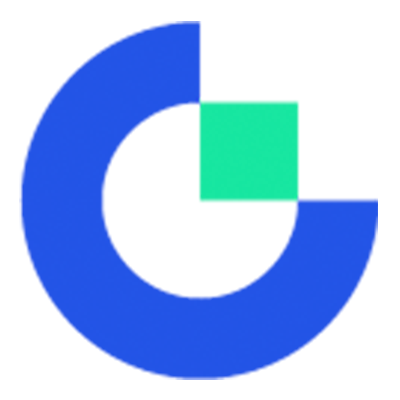Introduction
Are you ready to dive into the exciting world of Web3 vs Web2? As the internet evolves, understanding the key differences between these paradigms is crucial. From centralization to decentralization, data ownership to user empowerment, we'll explore how Web3 is reshaping our digital landscape. Discover the potential and challenges of this revolutionary shift in online interactions.
The Evolution: From Web2 to Web3
The internet has undergone a remarkable transformation since its inception, evolving from static web pages to the interactive platforms we use today. This evolution has brought us to the cusp of a new era - Web3. The transition from Web2 to Web3 represents a fundamental shift in how we interact with the digital world, promising greater user empowerment and decentralization.
Web2, the current iteration of the internet, revolutionized online interactions by enabling user-generated content and social connectivity. It gave rise to social media giants like Facebook and Twitter, transforming how we communicate and share information. Web2 made the world a smaller place, allowing people to connect across vast distances and enabling new forms of commerce and entertainment.
However, Web3 aims to address some of the limitations of Web2 by leveraging blockchain technology and decentralized networks. The core principle of Web3 is decentralization, which aims to redistribute power from large tech companies back to individual users. This shift has the potential to fundamentally change how we interact with the internet and each other online.
Key Differences: Centralization vs Decentralization
The most significant difference between Web2 and Web3 lies in their underlying structures. Web2 is characterized by centralized platforms controlled by large corporations, while Web3 embraces a decentralized model powered by blockchain technology.
| Aspect | Web2 | Web3 |
|---|---|---|
| Control | Centralized (Big Tech) | Decentralized (Users) |
| Data Ownership | Platforms | Individuals |
| Governance | Corporate | Community-driven |
| Infrastructure | Centralized servers | Distributed networks |
| Trust Model | Third-party intermediaries | Cryptographic proofs |
In Web2, user data is often stored and controlled by centralized entities, raising concerns about privacy and data exploitation. Web3, on the other hand, aims to give users greater control over their personal information through decentralized storage solutions and cryptographic techniques. This shift towards Web3 decentralization could potentially mitigate issues of censorship and data breaches that have plagued centralized platforms.
The use of blockchain in Web3 is crucial for enabling this decentralized structure. Blockchain technology provides a transparent and immutable ledger that can record transactions and interactions without the need for a central authority. This not only enhances security but also enables new forms of collaboration and value exchange.
User Empowerment: Data Ownership and Privacy
One of the most compelling aspects of Web3 is its promise of enhanced user ownership and control over personal data. In the Web2 paradigm, users often trade their personal information for access to services, with little control over how that data is used or monetized. Web3 aims to flip this model on its head, giving users the ability to own and monetize their own data.
The concept of Web3 user ownership extends beyond just data. It encompasses digital assets, identities, and even governance rights within decentralized platforms. This shift has the potential to create new economic models and incentive structures that reward users for their contributions to online ecosystems.
Privacy and security are also key focal points in the Web3 landscape. By leveraging cryptographic techniques and decentralized storage solutions, Web3 aims to provide users with greater control over their personal information and digital footprint. This enhanced privacy could help mitigate issues of surveillance and unauthorized data collection that have become prevalent in the Web2 era.
The Future: Challenges and Opportunities of Web3
While Web3 presents exciting possibilities, it also faces significant challenges on its path to widespread adoption. One of the primary hurdles is the complexity of the underlying technology. Blockchain and decentralized systems can be difficult for average users to understand and navigate, potentially limiting adoption.
Scalability is another critical challenge for Web3. Current blockchain networks often struggle with high transaction costs and limited throughput, which could hinder the development of large-scale applications. However, ongoing research and development in areas like layer-2 scaling solutions and more efficient consensus mechanisms offer promising avenues for addressing these issues.
The Web3 token economy represents both an opportunity and a challenge. While tokenization can enable new forms of value creation and exchange, it also introduces volatility and regulatory uncertainties. The integration of cryptocurrencies and digital assets into everyday online interactions will require careful consideration of economic and legal frameworks.
Despite these challenges, the potential benefits of Web3 are substantial. Decentralized finance (DeFi) platforms are already demonstrating the potential for more inclusive and efficient financial services. Non-fungible tokens (NFTs) are revolutionizing digital ownership and creating new revenue streams for creators. As Web3 technologies mature, we can expect to see innovative applications across various sectors, from supply chain management to digital identity verification.
As we navigate this transition from Web2 to Web3, platforms like Gate.io are playing a crucial role in bridging the gap between traditional and decentralized finance, offering users access to a wide range of Web3 assets and technologies. The journey towards a more decentralized, user-centric internet is ongoing, and the full impact of Web3 is yet to be realized. However, the potential for increased user empowerment, enhanced privacy, and new economic models makes Web3 an exciting frontier in the evolution of the internet.
Conclusion
Web3 represents a paradigm shift in internet technology, promising enhanced user empowerment and decentralization. By leveraging blockchain, it aims to redistribute control from tech giants to individuals, potentially revolutionizing data ownership, privacy, and digital interactions. While challenges like complexity and scalability exist, Web3's potential for innovation in finance, digital ownership, and beyond is undeniable. As this technology matures, it may fundamentally reshape our online experiences and economic models.
Risk Warning: Web3 adoption faces regulatory uncertainties and technical hurdles. Market volatility and potential security vulnerabilities could impact its development and user acceptance.



还没有评论,来说两句吧...